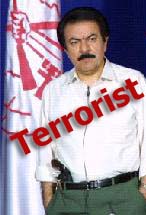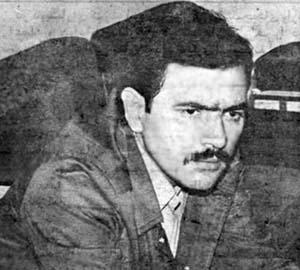To extend his hegemonic leadership over the whole organizational echelon, Rajavi first needed to subjugate high-ranking members hitting upon their personal weaknesses, threatening to dispossess them of organizational positions, fabricating stories about the first founders with himself playing a connection, and more.

The mass execution of the founder leaders of Mojahedin following SAVAK’s mass arrests in 1970s paved the way for Rajavi to take a different methodology to steer the organization. Although the later ideological schism of the organization could procure a good opportunity to deeply reexamine its ideological infrastructures to restructure it anew, Massoud Rajavi’s insist to lead the organization on the ruins of the past on one hand, and his gaping demarcation with faithful members on the other hand, totally changed the destiny of the organization. Rajavi’s hegemony is the second round of a past totalitarian leadership phase that ended and was remodeled in the ousted Pahlavi’s prisons.
The Iranian Islamic revolution was at its climax when Rajavi was released from the prison but he had managed to win over the majority of high-rankings to be identified as the leader. In fact, the opponents had been already purged inside the prison under the pretexts of being ultra-rightists or reactionaries and much more names and who were known to have jeopardized the organizational entity: there was not a single rival to challenge him then. Pointing out the widespread purgation by Rajavi while in prison, Bijan Nyabati, a left member of the NCRI, states:
Unlike normal procedures, Massoud Rajavi, by the effective aid of the brave martyred commander Musa Khyabani, disregarded many existing potentialities and started reorganization by purging all reactionary inclinations in an attempt to accomplish Hanif’s unfulfilled plan of bringing together a versatile cadre. He suspended all previous memberships and started a new recruitment out of the imprisoned Mojahedin. 1
Nobody doubts that Rajavi opportunistically took advantage of the created gap due to a power vacuum and his personal potentialities following the execution of the founder leaders to secure a status among the cadres. Majority of those who got separated in the course of the first ideological revolution that led to the ideological schism of the organization strongly criticized Rajavi’s opportunistic and power-seeking ambitions to succeed an autocratic leadership. Lotfollah Meisami is one the long detached members of the organization that is fully acquainted with Rajavi’s personal profile and ambitions and how he managed to expose as chosen leader even when his activities were limited in the prison:
Another issue concerning Rajavi was the ostentation he carried. For instance, when he arranged to meet others in a different section of the prison, there were escorts of some kind that came to prepare before his arrival. In fact, they made others wait on him as a man of high dignity. It was the same case with high-ranking official when they happened to visit the prison. 2
Rajavi being self-appointed as the autocratic political and ideological leadership following the internal ideological schism, he could see that he had guaranteed a permanent leadership with the potential rivals taking their portion of leading ambitions away with the split branch. He emerged out of prison while he was accompanied with a number of loyalists to start a new autocratic leadership that has continued for three decades promoting him to the status of a guru.
Refrences:
1. Niyabati, Bijan; A Different Look at the Ideological Revolution within MKO, Khavaran Publication, 7.
2. Meisami, L.; The moral decline of a Mojahed. Raah-e Mojahed journal, 1985.
Research Bureau – Mojahedin.ws – May 30, 2008

